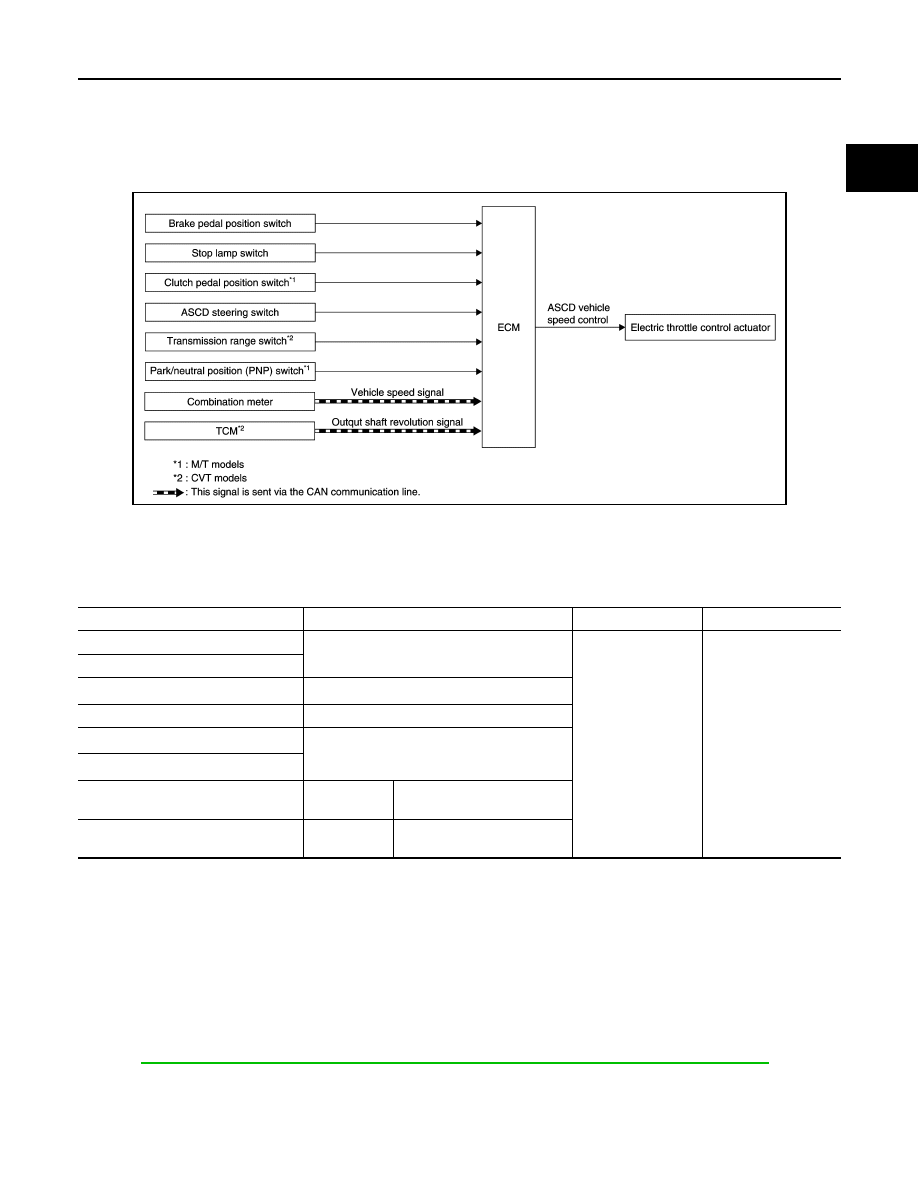Nissan Juke F15. Manual - part 460

SYSTEM
EC-653
< SYSTEM DESCRIPTION >
[MR EXCEPT FOR NISMO RS MODELS]
C
D
E
F
G
H
I
J
K
L
M
A
EC
N
P
O
NOTE:
MIL turns ON if a malfunction is detected in leak diagnosis results again at the trip after the fuel filler cap warn-
ing display turns ON/OFF.
AUTOMATIC SPEED CONTROL DEVICE (ASCD)
AUTOMATIC SPEED CONTROL DEVICE (ASCD) : System Diagram
INFOID:0000000012198230
AUTOMATIC SPEED CONTROL DEVICE (ASCD) : System Description
INFOID:0000000012198231
INPUT/OUTPUT SIGNAL CHART
*1: M/T models
*2: CVT models
BASIC ASCD SYSTEM
Refer to Owner's Manual for ASCD operating instructions.
Automatic Speed Control Device (ASCD) allows a driver to keep vehicle at predetermined constant speed
without depressing accelerator pedal. Driver can set vehicle speed in advance between approximately 40 km/
h (25 MPH) and 144km/h (90 MPH).
ECM controls throttle angle of electric throttle control actuator to regulate engine speed.
Operation status of ASCD is indicated by CRUISE indicator and SET indicator in combination meter. If any
malfunction occurs in ASCD system, it automatically deactivates control.
Refer to
EC-656, "AUTOMATIC SPEED CONTROL DEVICE (ASCD) : Switch Name and Function"
for ASCD
operating instructions.
NOTE:
Always drive vehicle in safe manner according to traffic conditions and obey all traffic laws.
INTEGRATED CONTROL SYSTEM
JPBIA4713GB
Sensor
Input signal to ECM
ECM function
Actuator
Brake pedal position switch
Brake pedal operation
ASCD vehicle speed
control
Electric throttle control
actuator
Stop lamp switch
Clutch pedal position switch
*1
Clutch pedal operation
ASCD steering switch
ASCD steering switch operation
Transmission range switch
*2
Gear position
Park/neutral position (PNP) switch
*1
Combination meter
CAN commu-
nication
Vehicle speed signal
TCM
*2
CAN commu-
nication
Output shaft revolution signal